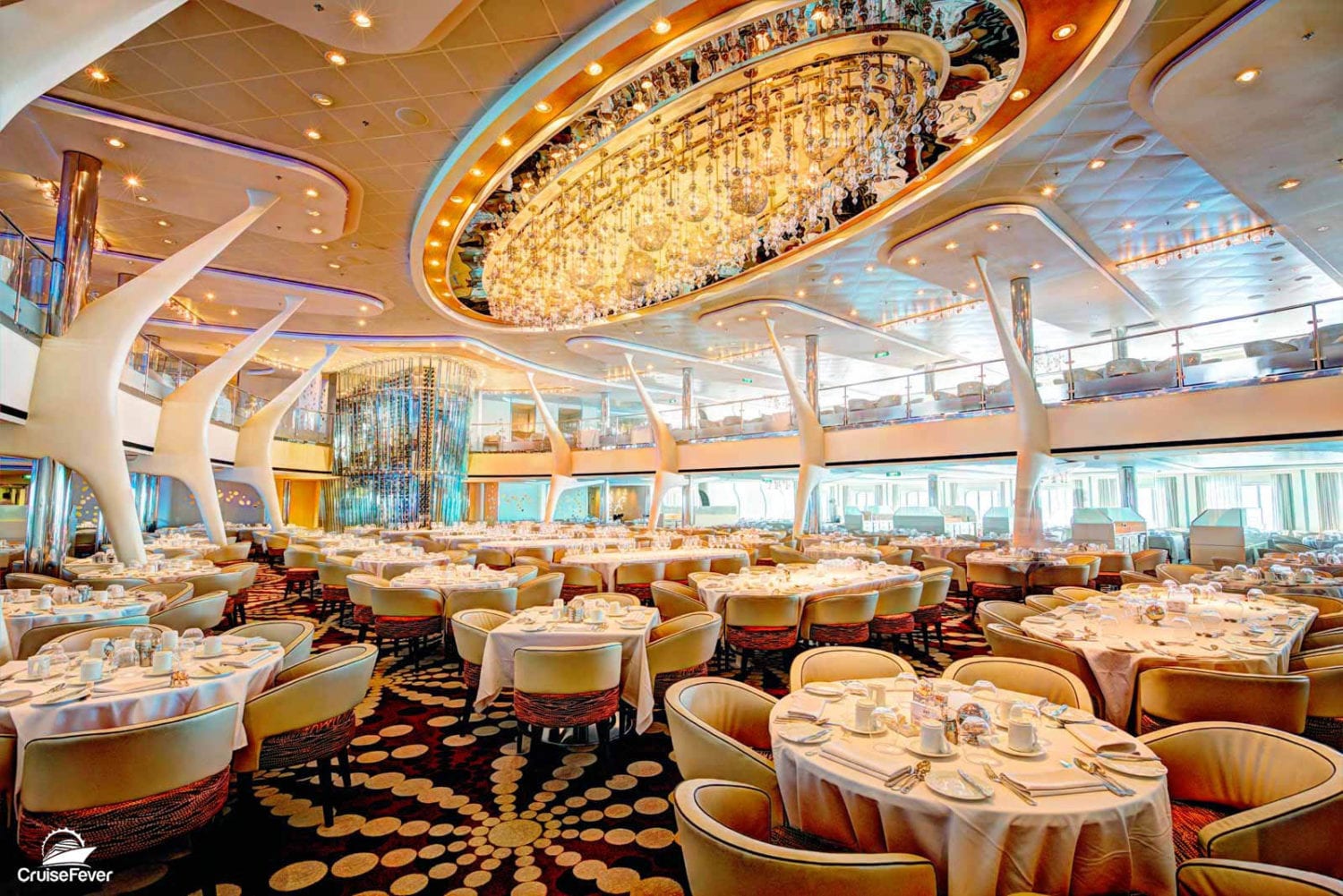Table Of Content

Most major cruiselines include water, unsweetened ice tea, lemonade or flavored punch, coffee and tea in the cost of a cruise. If you don’t want to eat in the buffet or public area, you can take food back to your cabin and eat it there. At the buffet, you can make a plate with snacks or even a larger meal. Room service is available on all cruise lines, however it’s not always free. While a few years ago most cruise lines offered free room service on a cruise, it now differs by cruise line.
Food Included on Cruises – What to Expect
Best cruise food: 6 cruise lines with the best food at sea - The Points Guy
Best cruise food: 6 cruise lines with the best food at sea.
Posted: Tue, 27 Jun 2023 15:03:47 GMT [source]
These dining venues are included in the cost of the cruise yet may require reservations for dinner. Other included cruise food options will vary by ship and cruise line. Some will have casual cafes and complimentary pizza, Mexican, Asian, fried chicken and barbecue restaurants or food counters.
Main Dining on Edge-Series Ships
Room service is generally free of charge; some lines, such as Norwegian and Royal Caribbean, charge a per-order fee for middle-of-the-night orders. In addition to room service, which can be ordered round the clock, many cruise ships make food available 24/7 (or at least during normal waking hours). All-night venues might include a small section of the buffet, a pizzeria or a shipboard diner.
Princess cruise food: The ultimate guide to dining on board - The Points Guy
Princess cruise food: The ultimate guide to dining on board.
Posted: Thu, 21 Mar 2024 07:00:00 GMT [source]
Main Dining Room

You can then meet with the head chef on the first day of your cruise to make sure you get the meals you need. Some cruise ships will puree food for your new eater, but you might need to request it in advance. Check with your cruise line before you sail, as you might need to bring your own jarred baby food. Whole milk is often available, but for convenience, you might consider taking cartons from breakfast and storing them in your cabin's minifridge for later in the day.
If you love a good buffet, cruises are known to have some of the best! Most cruise lines have a self serve buffet, while a few offer a full serve buffet. If you have an allergy or food preference, it’s important to let the cruise line or your travel agent know when you’re booking.
Part patisserie, part boulangerie, Le Grand Bistro is inspired by the City of Love—Paris. Stop in for coffee and croissants, baguette sandwiches, and other plats du jour. Or savor remixed French classics at Murano, like an elevated charcuterie board of cheeses and dry fruits, caviar, and pan-seared Dover sole. I might be the only person to cruise with Zip-loc bags full of snacks…but I bet I'm in good company. Solo travelers have many options to meet others and break bread with their shipmates. Consider tipping your room service delivery person a dollar or two to say thanks for not making you walk a few flights over to the buffet or all-night pizzeria.
What is open dining vs. set seating on a cruise?
Some lines include hot breakfast, while others charge for eggs and pancakes delivered to your cabin. These extra-fee cruise ship restaurants cover a wide variety of cuisines and styles. You might find a family-style Italian trattoria, group dining at a teppanyaki grill or a French bistro perfect for date night. Steakhouses are common, though they can have American, Brazilian or Italian influences. Sushi and Asian-fusion restaurants are popular, as are broader seafood venues, both upscale and lobster shack-style.
Do solo travelers have to dine alone?
Main Restaurant is an airy, open concept with a varied menu of contemporary dishes plated and presented like never before. There’s a wealth of choice each evening at the Main Restaurant, where menus are both sophisticated and satisfying. Cruising is a family vacation, and onboard restaurants know all about your child and her love affair with chicken nuggets. If you're an uber-foodie, you'll want to look for intimate Chef's Table dining events for a gourmet meal paired with wine, personally planned by one of the onboard chefs. We welcome all sorts of dietary preferences and accommodate allergies as best we can. When you arrive on your cruise, mention your dietary restrictions to our crew so we can take good care of you.
Passengers who keep kosher can get kosher meals at no extra charge, but they will be pre-packaged, rather than made from scratch in the ship's galleys. The exception is specific kosher charters, where rabbis will come on board and ritually clean a section of the ship's galley. Halal food is not that common and lines like Royal Caribbean, which do carry it, only do so on select itineraries. The choice can be overwhelming for a new cruiser – as can the complicated rules around who can eat where and when, while wearing what. Even if you don't live for food, you'll want to peruse this guide to cruise ship food and dining to get the lay of culinary land before your next sailing.
On the first day of the cruise, be sure to meet with the maitre d' or other designated food and beverage officer to introduce yourself and discuss dining options. On some lines, you'll get the dinner menu in advance to mark with the items you prefer so the galley can prepare your food to your specifications. At the buffet, a crew member may be assigned to show you which items should be avoided. Now, most lines offer a complimentary continental room service breakfast. Depending on the line, all orders outside of breakfast will come with a per-order charge, or the room service menu will have a mix of complimentary and extra-fee dishes.
When it comes to understanding our menu, we’ve created symbols for various dietary preferences. A small blue cow with a line running through it indicates a lactose-free option. If a dish has both vegetarian and lactose-free symbols, it is most likely vegan. Always check with your server before ordering to confirm that a menu item meets your expectations. From cutting-edge culinary delights to your favorite comfort foods, you’ll find it on one of our luxury cruise ships. Yes, you can bring your own food onboard -- including snack food you like to have on hand and items you pick up in port.
You can't bring raw meat onboard, but pretty much anything else is fair game. However, there's so much food onboard that, unless you're very picky or have a dietary restriction, there's not much need to bring your own food. If you're looking to buy bottled water, do so in port where it will be much cheaper. You will never have to don a gown or tuxedo to eat dinner on a modern-day cruise ship.
Some cruise lines will offer hosted tables for solo travelers, especially on luxury lines where dining is always flexible. These lines may even employ gentleman hosts to guide the conversation and make sure everyone feels welcome and included. Inquire with guest services or the maitre d' and they can get you sorted. Historically, room service was free – an amazing perk of cruising, compared to hotels.
The ships in these lines offer multiple onboard dining venues where you either make a reservation or try your luck as a walk-in, as you would at any land-based restaurants. Most will have one main dining room venue that is larger and does not require reservations or extra fees to eat there. Main dining restaurants feature versatile menus that cater to a variety of tastes and dietary preferences, which comes included in your cruise fare. As someone who does not eat meat or shellfish, I've had no problem feeding myself with the available menu items on board. Some cruise lines will put icons on their menus next to vegetarian or gluten-free items, but it's hit or miss across the industry.

No comments:
Post a Comment